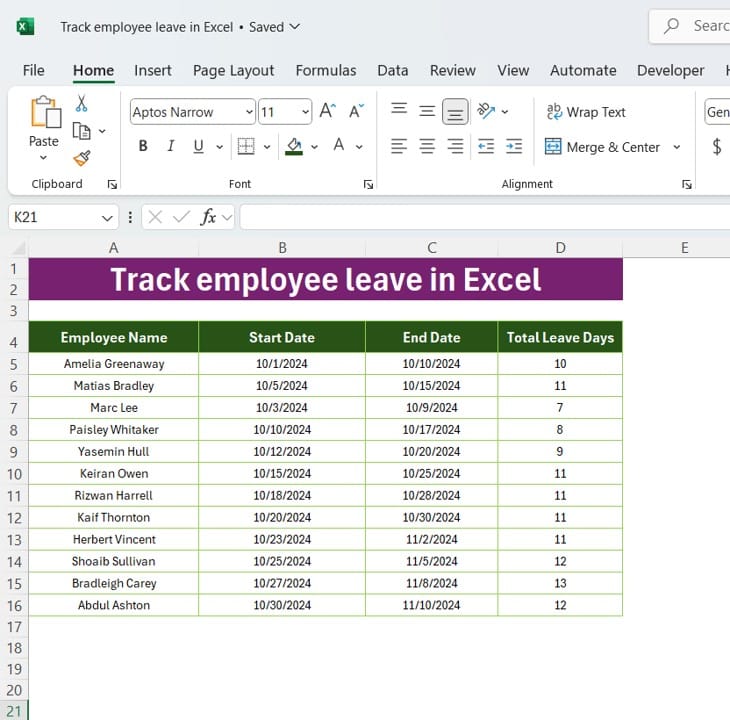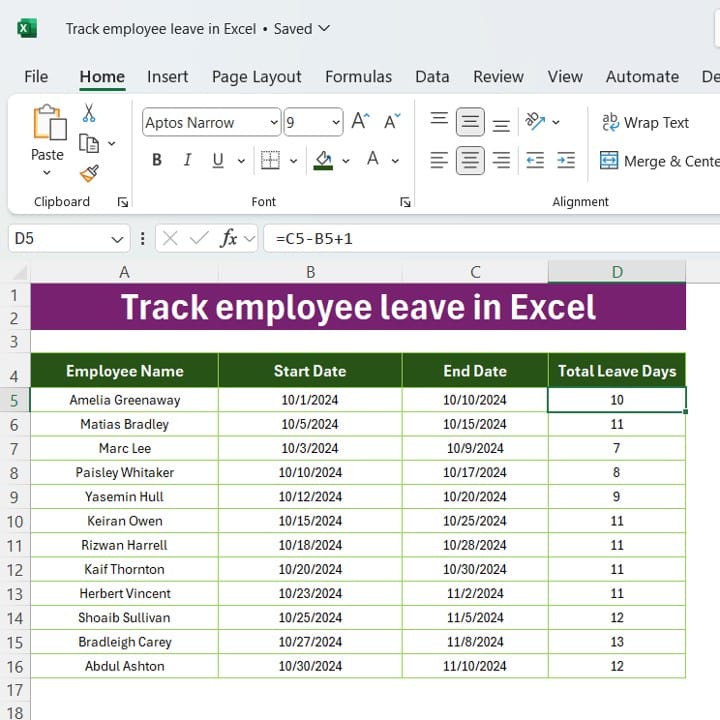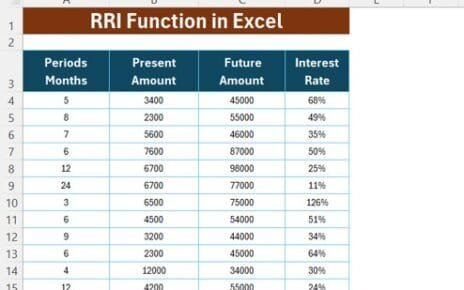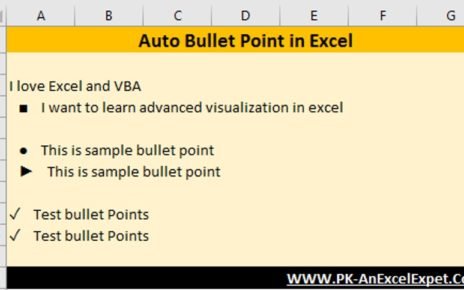Tracking employees leave effectively is essential for any organization to manage workload, allocate resources, and ensure smooth operations. In this blog post, we’ll walk you through an easy way to Track employee leave in Excel using a simple formula that calculates the total leave days based on start and end dates. This approach is perfect for HR teams, managers, or anyone who wants a straightforward way to keep track of leave days.
Why Track Employee Leave in Excel?

Excel is widely used in organizations because of its simplicity, flexibility, and range of useful functions that help organize and analyze data. Tracking employee leave in Excel allows you to have a visual record of leave dates, plan around absences, and avoid scheduling conflicts. Plus, it’s cost-effective, as most people already have access to Excel!
Setting Up Your Employee Leave Tracker
To start, let’s set up a basic table in Excel. We’ll use four columns to store the relevant data:

- Employee Name (Column A)
- Start Date of the leave period (Column B)
- End Date of the leave period (Column C)
- Total Leave Days taken (Column D)
Step-by-Step Guide to Calculate Total Leave Days
The goal is to calculate the total leave days for each employee using the start date and end date in Columns B and C, respectively. To do this, we’ll apply a simple Excel formula in Column D to get the number of leave days automatically. Let’s dive into the steps:
- Enter Data: First, input the employee data in Columns A through C as shown in the table above.
- Select the Formula Cell: In the first cell under the “Total Leave Days” column (D5), enter the following formula:
- =C5 – B5 + 1
Explanation of the Formula:
- C5 refers to the End Date.
- B5 refers to the Start Date.
- Subtracting B5 from C5 gives the number of days between these dates, and adding 1 ensures that both the start and end dates are counted.
- Copy the Formula Down: Once the formula is set in D5, you can simply copy it down the column to calculate leave days for each employee automatically.
- View the Results: Excel will now display the total leave days in each row under “Total Leave Days.”
Benefits of Tracking Employee Leave in Excel
Here are a few reasons why tracking leave in Excel an excellent choice is:
- Simple Setup: No need for complex software—Excel does the job with ease.
- Easy to Customize: Add or remove columns as needed. Want to track additional data like “Leave Type” or “Reason for Leave”? Just add extra columns.
- Automated Calculations: The formula automatically calculates the total days based on start and end dates, minimizing manual errors.
Best Practices for Managing Leave Data in Excel
To make the most of your Excel leave tracker, consider these tips:
- Update Regularly: Ensure the leave data is up to date to avoid scheduling conflicts.
- Use Conditional Formatting: Cooler-code the cells to highlight upcoming leaves or extended absences.
- Back Up Regularly: Save your Excel file in a secure location to prevent data loss.
Common Questions
Q: Can I use this formula if my dates are in a different format?
A: Yes! Excel will recognize dates as long as they’re entered consistently across your table. Just ensure the cells are formatted as dates.
Q: What if I want to exclude weekends or holidays?
A: You can use the NETWORKDAYS function instead, which can exclude weekends and specified holidays.
Visit our YouTube channel to learn step-by-step video tutorials
View this post on Instagram
Click hare to download the practice file



